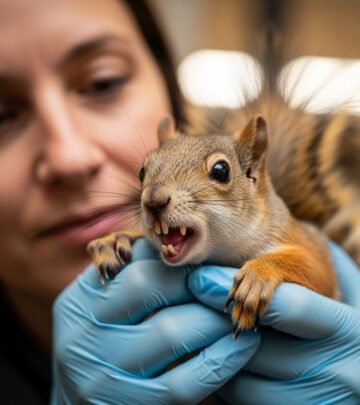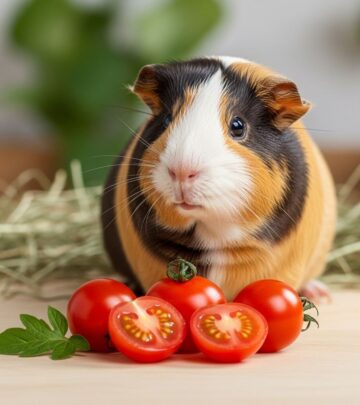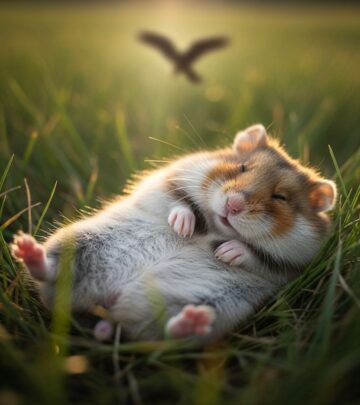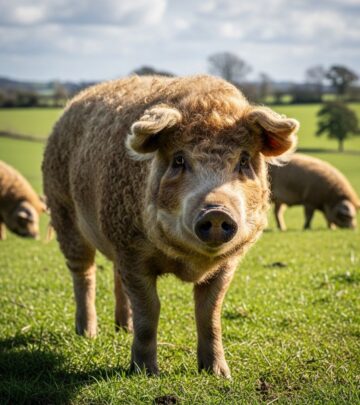Hamster Breeds: 5 Popular Varieties And Personality Traits
Explore the most popular hamster breeds, their characteristics, care needs, and personality traits for a perfect pet match.
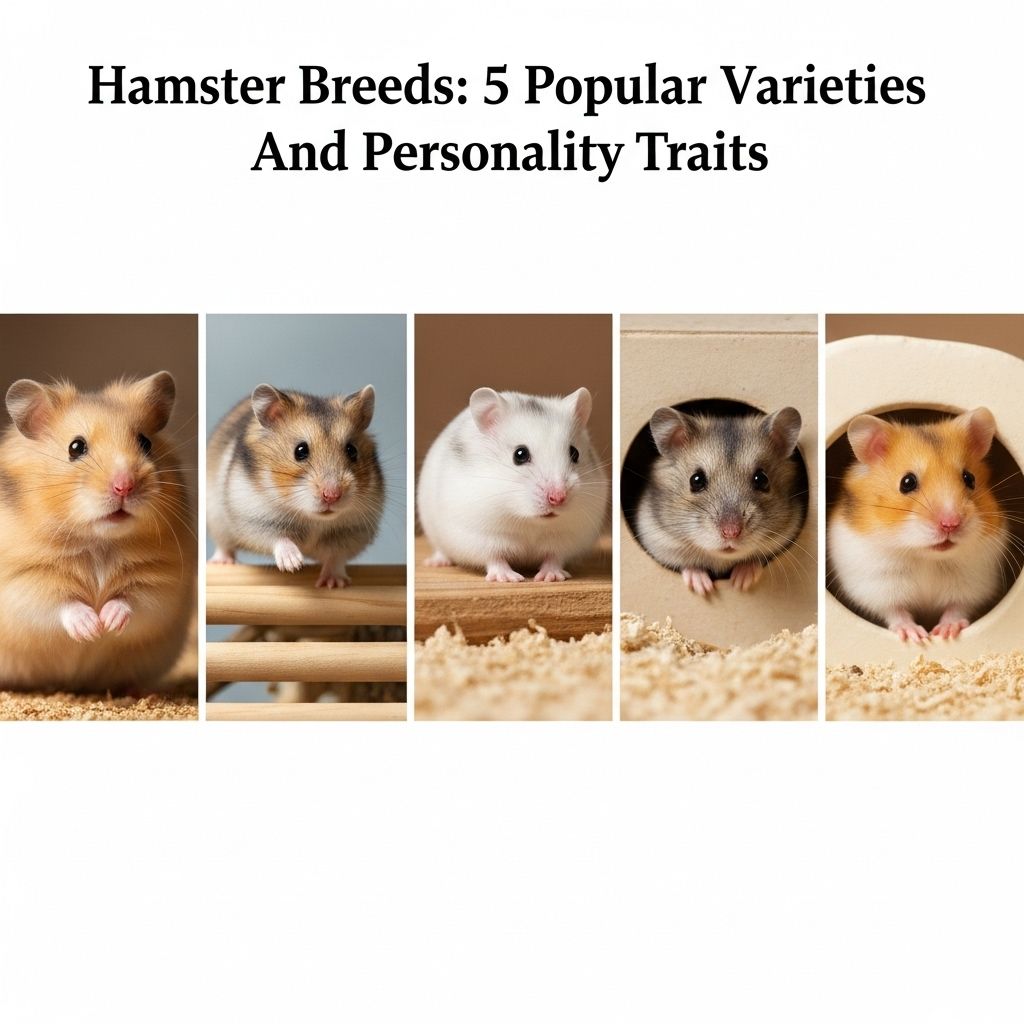
Image: HearthJunction Design Team
The Ultimate Guide to Popular Hamster Breeds and Their Unique Personalities
Hamsters are a popular choice for small pets thanks to their adorable looks, intriguing behaviors, and relatively simple care requirements. With several breeds varying in size, color, temperament, and care needs, choosing the right hamster for your home is both exciting and important. This guide covers the most beloved hamster breeds, their distinct personalities, and helpful care tips to ensure a happy and healthy furry friend.
Why Choose a Hamster?
Hamsters are nocturnal, low-maintenance, and thrive in large cages with consistent handling. They make wonderful pets for people with limited space or those seeking their first foray into pet ownership. Some breeds are more social and can live in pairs or small groups, while others are strictly solitary and should be kept alone to prevent aggression.
- Variety of breeds and personalities to match different households
- Typically less expensive to care for than larger pets
- Quick to bond with patient, gentle handling
- Nocturnal habits suit night owls
Popular Hamster Breeds
The world of pet hamsters is diverse, each breed offering unique challenges and joys. Here are the most common and cherished breeds found in households:
Syrian (Golden) Hamster
The Syrian hamster, also known as the Golden, Teddy Bear, or Standard hamster, is the most widely kept pet hamster. Their larger size, generally easygoing temperament, and array of color and hair variations make them ideal for beginner pet owners. However, Syrian hamsters are highly territorial and should always be kept alone to prevent fighting and injury.
- Size: 5 to 9 inches in length
- Weight: 3 to 5 ounces
- Lifespan: 2 to 3 years
- Temperament: Gentle, friendly with people, prefers solitude from other hamsters
- Physical Traits: Golden brown with lighter belly; available in a spectrum of colors and coat patterns (including cinnamon, cream, and piebald); short, stubby tail; short fur on the head and larger ears compared to dwarfs
Best Cage: Spacious and well-ventilated enclosure (minimum 450 square inches of floor space) with deep bedding for burrowing, a solid running wheel, and enrichment items for foraging and play.
Chinese Hamster
The Chinese hamster stands out for its slender, mouse-like appearance and long tail – unique among domesticated hamster species. Not a true dwarf, but often grouped with them due to its petite size, the Chinese hamster is typically shy but can become very docile and lovable with regular, gentle handling.
- Size: 3.5 to 5 inches long
- Weight: 1 to 2 ounces
- Lifespan: 2 to 3 years
- Temperament: Gentle, can be timid but bonds well with time
- Physical Traits: Brownish-gray with a black dorsal stripe and white underparts; longer, thin tail (nearly an inch long)
Suitability: Ideal for those looking for a gentle, slightly more exotic hamster; best housed alone due to occasional territorial behavior. Their petite size and quick movements require careful handling.
Roborovski Dwarf Hamster
The Roborovski, or “Robo,” dwarf hamster is the smallest breed in the pet trade and one of the fastest. Their tiny size and energetic temperament make them best appreciated by watching rather than handling, especially by children. Robos are also known for being less likely to bite than some other dwarfs, but their speed can make handling difficult for inexperienced owners.
- Size: 1.5 to 2 inches long
- Weight: 0.7 to 1 ounce
- Lifespan: 3 to 4 years
- Temperament: Active, fast, curious; not typically cuddly
- Physical Traits: Sandy brown fur, white stomach, distinctive white “eyebrows”; lacks a dorsal stripe; round body
Social Needs: Roborovski hamsters can sometimes be housed in same-sex pairs or groups if introduced young, but close monitoring is essential to prevent fighting.
Campbell’s Dwarf Hamster
Campbell’s dwarf hamsters are sociable and energetic. They are often confused with the Winter White, but are a separate species. Campbell’s are native to the steppes of central Asia and can thrive in groups if introduced young and given ample space.
- Size: 3.5 to 4.5 inches long
- Weight: 1 to 2 ounces
- Lifespan: 1.5 to 2 years
- Temperament: Lively, social, can be nippy if startled or improperly handled
- Physical Traits: Gray-brown fur, lighter underbelly, clear dorsal stripe
Tip: Best for experienced hamster owners or adults who can handle small, quick pets with patience.
Winter White Dwarf Hamster
The Winter White, or Russian dwarf hamster, is beloved for its adorable round shape and unique ability to change color in winter, turning from gray to nearly all white. Highly social and tolerant of others, this breed can be housed in same-sex pairs or groups if introduced at a young age. They are known by several names, including Djungarian or Siberian hamster.
- Size: 2.7 to 3.5 inches in length
- Weight: 0.7 to 1.6 ounces
- Lifespan: 1.5 to 2 years
- Temperament: Social, gentle, playful, easy to tame
- Physical Traits: Round body, short snout, dark gray fur with a black stripe along the back, white underbelly, fur may turn white in winter
Compatibility: Excellent for households that want multiple hamsters. Still, be prepared to separate if fighting occurs.
Hamster Breeds at a Glance
| Breed | Size (inches) | Lifespan (years) | Temperament | Social Needs |
|---|---|---|---|---|
| Syrian | 5 – 9 | 2 – 3 | Gentle, solitary | Must be alone |
| Chinese | 3.5 – 5 | 2 – 3 | Timid, gentle | Best alone |
| Roborovski | 1.5 – 2 | 3 – 4 | Active, fast | Pairs/groups possible |
| Campbell’s Dwarf | 3.5 – 4.5 | 1.5 – 2 | Social, energetic | Pairs/groups possible |
| Winter White Dwarf | 2.7 – 3.5 | 1.5 – 2 | Gentle, playful | Pairs/groups possible |
Choosing the Right Hamster for You
- Families with young children: Syrian hamsters are easiest to handle and less fragile due to their size.
- First-time owners seeking variety: Dwarf species offer playful energy and sometimes group compatibility.
- Observation over handling: Roborovski hamsters entertain with their speed and antics, though they are less suited for cuddling.
- Pet owners with patience: Chinese hamsters require gentler, slower bonding due to their timid nature.
- Those interested in watching group dynamics: Winter White or Campbell’s dwarfs tolerate multi-hamster living if introduced early.
General Care Tips for All Hamster Breeds
- Provide a spacious habitat with ample bedding for burrowing
- Feed a balanced diet of high-quality hamster pellets, supplemented with small pieces of fresh fruit and vegetables
- Offer a solid-surface running wheel and enrichment toys to prevent boredom
- Spot clean cages daily; deep clean weekly
- Handle gently and regularly to build trust
- House solitary breeds alone; monitor pairs or groups closely for aggression
Frequently Asked Questions (FAQs)
What is the friendliest hamster breed?
The Syrian hamster is often considered the friendliest for handling, thanks to its size and generally docile temperament. Winter White dwarfs are also easy to tame and social, making them a great choice for families or those wanting multiple hamsters.
Can hamsters live together?
Syrian and Chinese hamsters are strictly solitary and should never be housed with others of their kind. Dwarf species like Roborovski, Campbell’s, and Winter White can sometimes live in same-sex pairs or groups if introduced young, but even these can develop aggression and may need to be separated.
What is the average lifespan of a pet hamster?
Most pet hamsters live between 1.5 to 4 years, depending on the breed, genetics, and quality of care. Roborovski hamsters tend to live the longest, while Campbell’s and Winter White dwarfs have slightly shorter lifespans. Regular veterinary care, quality nutrition, and proper husbandry help maximize your hamster’s lifespan.
Which hamster breed is best for beginners?
Syrian hamsters are typically the easiest for beginners due to their size, calmness, and ease of handling. They’re a great introduction to hamster care for new owners and families with responsible children.
Are hamsters good pets for children?
Hamsters can be good pets for older children who understand how to handle them gently. Syrians, in particular, are less fragile and more forgiving than dwarfs. Always supervise young children and teach them proper handling techniques to avoid stress or injury to the hamster.
Key Takeaways
- Hamsters offer a wide range of personalities, sizes, and social needs.
- Solitary breeds (Syrian, Chinese) should always be kept alone to prevent fighting.
- Dwarf breeds (Roborovski, Campbell’s, Winter White) may live in pairs or groups but still require monitoring.
- Choose a breed that matches your lifestyle, handling experience, and household composition.
- Invest in a spacious, well-equipped cage and provide consistent care for a happy, healthy hamster.
References
- https://www.thesprucepets.com/popular-hamster-breeds-5101161
- https://oxbowanimalhealth.com/blog/hurray-for-hamster-breeds/
- https://www.petmd.com/exotic/evr_ex_hm_five-most-popular-hamster-breeds
- https://www.petco.com/content/content-hub/home/articlePages/01/hamster-breeds-which-is-right-for-me.html
- https://be.chewy.com/hamster-breeds/
Read full bio of Anjali Sayee








